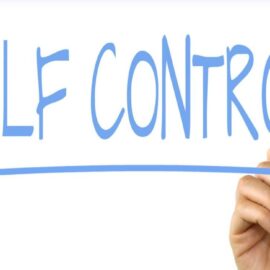

This article is an excerpt from the Shortform book guide to "The Genius Zone" by Gay Hendricks. Shortform has the world's best summaries and analyses of books you should be reading.
Like this article? Sign up for a free trial here.
Do you spend your days doing work that’s not a good use of your skills? Do you spend your nights worrying that you won’t reach your potential?
Psychologist Gay Hendricks asserts that genius isn’t just a matter of skill; it’s also about how you do the things you love and the depth of attention you devote to the tasks that are most satisfying to you. That’s why he recommends that you devote your time to creative work in your Genius Zone.
Read more to learn how to find fulfillment in life and bring happiness to others by living in the Genius Zone.
How to Find Fulfillment in Life
Living in the Genius Zone requires practice with consciously choosing how to allocate your time and attention. It also involves a process of committing and recommitting to your goals, and gently correcting course when you realize that you’ve strayed. Hendricks explains that, instead of chasing perfection and considering success an all-or-nothing endeavor, you can realize that it’s inevitable to make mistakes. When you slip up, take concrete steps to get back on track instead of criticizing yourself.
If you want to learn how to find fulfillment in life and make a difference in the world around you, Hendricks says you must tap into the Genius Zone and thrive in that space.
(Shortform note: Expert advice abounds on how you can push back against perfectionism. In The Gifts of Imperfection, Brené Brown writes that you can treat yourself with compassion and accept your imperfections and mistakes, rather than punishing yourself for them. One way to do this is to practice positive self-talk: Actively encourage yourself as you face your challenges rather than criticizing yourself for your flaws or shortcomings.)
Hendricks outlines a variety of methods and tools to access the Genius Zone, pursue your creative potential, and minimize your negative thinking. Each one is either a tool you can use when you realize you’re trying to control something you can’t or a practice you can cultivate over time to work toward the goal of doing the things you love while making a positive impact on the world around you.
(Shortform note: It often isn’t easy to figure out how to do creative work that has a positive impact, and not everyone agrees that this is a balance you have to strike. In Big Magic, Gilbert writes that you might limit your creativity by setting the requirement that it has to help other people or otherwise be “important,” rather than something that’s true to you. Similarly, in Keep Going, Kleon advises considering the impact that your work has on you as well as on others: He argues that nobody should suffer for the sake of your creative work, and that includes you.)
In this section, we’ll explore Hendricks’s tools to help you access your Genius Zone, based on a range of “Hands-On Activities” he offers throughout the book.
#1: Commit to Letting Go of Negative Thoughts and Pursuing Your Full Creative Potential
To find and live in your Genius Zone, the first thing that Hendricks says you should do is to explicitly make a commitment to yourself: Resolve to stop your habit of negative thinking and to pursue your true creativity. Hendricks writes that if you don’t feel that you can sincerely make this commitment, then you shouldn’t proceed with the rest of the process until you’ve figured out what stands in your way.
(Shortform note: Hendricks doesn’t comment specifically on what could cause you to feel resistance to changing your thoughts and pursuing your creative potential. But one answer might lie in your natural change aversion: If you’ve been thinking and living your life in a specific way, then it’s natural to resist change, even if you know that change might make you happier. Psychologists say that your dislike of change is driven by cognitive biases that can lead you to make poor decisions and fall short of your potential. They recommend taking a step back to look as objectively as you can at how you’re making your decisions. Then, you might be able to determine whether it’s your fear of change, or something else, that’s holding you back.)
#2: Perform the “Genius Move” When You Start Thinking About Things You Can’t Control
Next, the key method of the book is a technique that Hendricks calls the “Genius Move.” Hendricks writes that when you feel unhappy, it’s because your thoughts have turned to something that’s outside of your control. The solution is to switch your focus to something that you can change.
- First, notice that you’re feeling unhappy, that you’re carrying tension in your body, or that you feel stuck in a cycle of negative thoughts.
- Next, try to identify the situation that you’re trying to control. (That could be anything that you’re worrying about, from the impression you made on a new neighbor to the odds that Amazon is going to deliver the book you ordered in time for your weekend trip.)
- You might be able to figure out what it is and why you’re trying to control it. Or, that might not become clear. Either way, the important thing is to sit with the question.
- Then, even if you’re not sure what you’re trying to control, acknowledge that it’s outside of your control and state that you’re letting go of trying to control it.
- Finally, identify something positive and productive you can do to affect something that’s within your control and then take that action.
#3: Use Your Breath to Tune In to Your Emotions
Next, Hendricks advises cultivating an awareness of your breathing as a useful tool for pursuing life in the Genius Zone, a process that he believes should involve both the mind and the body. He explains that you can learn to tune in to your emotions by becoming aware of your breathing. Breathing involves both the autonomic nervous system and conscious control, so learning to pay attention to your breath might be one way to access the connection between your conscious and unconscious minds.
For instance, Hendricks explains that, when you’re feeling calm, you’ll notice that your abdominal muscles relax and you take deep breaths that fill your belly. When you’re feeling angry or scared, you can feel your abdominal muscles tense, and your breathing might be restricted to your chest. If you learn to notice when your breath moves up into your chest, then you can realize when you feel angry or scared, name the feeling, and figure out how to respond to it.
(Shortform note: Experts often recommend cultivating an awareness of your breath to tune in to what’s happening internally: In Wherever You Go, There You Are, Kabat-Zinn characterizes breath as a crucial tool for mindfulness. He writes that you can use your breath as a focal point when you realize that you need to pause and pay attention to what you’re experiencing or feeling. Another mindfulness expert, psychologist Russ Harris, writes in The Happiness Trap that when you develop body awareness—which you can do by paying attention to your breathing, noticing tension in your body, or focusing on the heat you feel in your body—you create space within your body to accept your emotions, rather than fight against them.)
#4: Commit to Communicating Honestly and Thoughtfully
Another strategy Hendricks recommends adopting if you want to live in the Genius Zone is to cultivate relationships with people who not only support and appreciate your creativity but with whom you can communicate honestly and thoughtfully. He explains that you probably leave things unsaid, even in conversations with the people you’re closest to. But you don’t want to be lied to, and so you shouldn’t lie to other people.
(Shortform note: Psychologists say that communicating honestly is about a lot more than just refraining from telling lies. Honestly requires not just the absence of deception but also a willingness to be open and trusting with someone else. In fact, some experts report that a willingness to feel vulnerable or to disclose something meaningful about yourself more accurately indicates the strength of your relationship with another person than whether you occasionally tell a white lie. Conversely, being honest isn’t about saying everything that comes into your head; instead, you can be sensitive to the other person’s feelings while still speaking truthfully about what you’re thinking and feeling.)
Hendricks advises that in addition to practicing the skill of communicating honestly, you should cultivate the skill of listening generously and thoughtfully, without interrupting or criticizing what the other person says. He explains that you can’t control what other people think or say, and letting go of trying to control them will make it easier for you to live in your Genius Zone.
(Shortform note: Listening generously is a principle that comes up in many books, but it’s not always clear how you can put it into practice. In What Got You Here Won’t Get You There, executive coach Marshall Goldsmith offers some practical steps for becoming a more generous listener. First, he recommends letting the other person speak without interrupting them, just as Hendricks advises. Second, Goldsmith says it’s important to give the other person your full attention when they’re talking, keeping yourself from zoning out or getting distracted. And third, he recommends being thoughtful about how you decide to respond to the other person, making sure that your response makes them feel respected, appreciated, and heard.)
#5: Accept Negative Thoughts Without Trying to Change Them
The next strategy that can help you pursue your genius is to learn to overcome your negative thoughts about the past, the future, other people, and yourself. Hendricks writes that to stop dwelling on your negative thoughts, you have to first acknowledge that you can’t control your thoughts. When you accept your negative thoughts for what they are, then you loosen their hold over you. By using the “Genius Move” to change your focus, you can stop expending energy on fighting negative thoughts and instead focus it on something you can change.
(Shortform note: For many of us, letting go of negative thoughts is easier said than done. In The Willpower Instinct, health psychologist Kelly McGonigal explains that you can’t use willpower to control your thoughts or desires. If you’ve ever found yourself obsessing over the very thing you’re trying not to think about, then you’ve seen this firsthand. McGonigal notes that rather than trying to suppress a thought, you’ll likely find it much more effective to let your mind express it, while realizing that you don’t have to act on it. Once you allow the thought to surface, then your mind can stop obsessing over it and let it go.)
#6: Stop Leaving Tasks Incomplete
Another simple tool for living in your Genius Zone involves learning to finish what you start. Hendricks writes that much of our negative thinking begins because we have a tendency to leave tasks and conversations unfinished. When we leave these things incomplete, then we feel negative emotions ranging from guilt to sadness to shame to denial, as well as a physical sense of that negative feeling.
Unfinished tasks could be as small as an email you left in your “drafts” folder or as big as brushing off an important conversation with your partner. The solution is to identify the tasks that you’ve left incomplete and, one by one, go back and finish them. If you have a long list of the things you’ve left undone, take it day by day, and you’ll cross items off your list and eliminate sources of negative thoughts.
(Shortform note: Many experts agree that we often leave tasks incomplete despite the fact that the habit doesn’t serve us. In The Success Principles, Jack Canfield writes that you might have projects that remain unfinished, commitments you haven’t followed through on, or insufficient time to spend with the people you love. Like Hendricks, Canfield advises making a list of tasks you’ve left incomplete and then addressing them, one by one. Canfield characterizes these unfinished tasks as clutter that constantly distracts you and demands your energy, hurting your productivity and focus. As you cross them off your list, you’ll have more energy and mental space for new things in your life.)
#7: Ask Open-Ended Questions
Another tool that Hendricks recommends using is the open-ended question (what he calls “wonder questions”). Hendricks writes that the sensation of wonder lies at the heart of creativity: It’s what you feel when you let your mind explore, free of your efforts to control or criticize it. He explains that asking yourself open-ended questions that relate to the things that you’d most like to know in your life can engage your creativity, genius, and wonder.
These questions don’t have a single right answer; instead, they have a number of possible answers, each of which might open a different avenue for you to explore. You might want to know, “What can I do every day to make the most of my time with my family?” or “How can I use my skills to make the biggest difference in my community?” Hendricks notes that discovering answers to these questions could change your life. But even if you don’t find a complete answer, the process of contemplating the question can still help you gain insight into how to do what you love to do while making a positive contribution.
(Shortform note: Experts characterize wonder as a complex emotion, one that combines surprise and curiosity with contemplation and joy—and involves a heightened level of consciousness and emotion. You feel wonder both when you’re awed by something and when you’re puzzled by something that you want to explore, both situations that we’ve all experienced. In 21 Lessons for the 21st Century, Yuval Noah Harari writes that throughout human history, we’ve asked ourselves questions like “What is the meaning of my life?” and “What is my role in the universe?” Harari writes that when we wonder about these open-ended questions, we look for the answers in cultural stories or within ourselves.)
#8: Cultivate Relationships With People Who Support Your Creativity
Next, if you want to pursue the highest expression of your creativity, it helps to surround yourself with people who support your creative pursuits and appreciate your creativity. Hendricks recommends taking a clear-eyed look at the people to whom you devote your time and energy. When you build relationships with people who support your creativity, you can do the things you love to do and help them do the same.
However, when you choose to spend time and energy with people who don’t encourage your creativity, Hendricks recommends acknowledging the role of your own choices instead of blaming others when you fail to reach your creative potential. Letting go of blame frees up more space for creativity.
(Shortform note: Some experts agree with Hendricks that other people play an essential role in creativity. One way to surround yourself with people who support and inspire your creativity is to find your creative community. Novelist Alexander Chee—who mentors and advocates for writers from marginalized communities, especially queer and AAPI (Asian American Pacific Islander) writers—explains that community is something you have to actively seek out. Chee explains that doing creative work as part of a community isn’t just about making connections with other people: It also involves making long-term commitments to the causes that are important to you and taking care of your community.)
#9: Appreciate and Cultivate Your Creativity
Another tool to tap into your creativity is simple appreciation. Hendricks writes that the more deeply you appreciate your creativity, the more freely you’ll be able to access and express it—which is necessary for your happiness. According to Hendricks, you need to treat your creativity as you would a partner, one whom you value and want to keep around. When you express your appreciation for your creativity, you not only feel grateful for it but you also pay particular attention to it, tuning in to it and choosing to spend your time with it.
(Shortform note: Appreciating your creativity like a partner might help you cultivate it. Writer Kelly Link explains that you can think of your subconscious as a “Silent Partner” who continually supplies you with creative ideas. When you reject those ideas, then your Silent Partner becomes more hesitant to offer them to you. If you reject too many ideas, then it may stop offering them altogether. Link suggests learning to recognize and welcome ideas from your subconscious—and to ask for more. Then, your subconscious learns to generate more ideas that are exactly what you’d like to produce in your creative practice.)
When you tell yourself that you feel grateful for your creativity, you may need to tune out negative thoughts that tell you that actually, you aren’t grateful for your creativity, or maybe that you aren’t creative at all. Hendricks recommends simply acknowledging those thoughts and putting them aside to focus on deepening your relationship with your creativity instead.
(Shortform note: If you find that you have trouble ignoring negative thoughts, psychologists have identified some concrete steps you can take to let go of them. First, you can remind yourself that you aren’t your thoughts, and they’re only with you temporarily. You can also set a few minutes aside to listen to them and ask them why they’re there—and you just might get an answer. Another idea is to tune into the emotions you’re feeling so that you can understand what’s bothering you. Or, you can just thank your negative thoughts for trying to protect you.)
#10: Commit to Spending a Specific Percentage of Your Time in the Genius Zone
Time commitments are another simple tool that Hendricks advises using as you pursue creative fulfillment. He recommends considering how much time you want to commit to spending in your Genius Zone and setting a specific goal. For instance, he suggests that you might want to focus on your genius for an hour a day, for half of your waking hours, or for all of your waking hours. By making a commitment to spending a portion of your day in the Genius Zone, you make room in your life for your creativity, in the capacity that makes the most sense for you.
(Shortform note: Though many of us can find an hour a day to dedicate to a new habit, Hendricks doesn’t comment on how you could make the more demanding commitment of dedicating half or all of your waking hours to the tasks in your Genius Zone. Other writers have raised the question of whether arranging your life around your passions is only within reach for people with an unusual amount of resources and privilege. In The Trouble With Passion, sociologist Erin A. Cech explains that the advice to “follow your passion” perpetuates inequality by class, gender, and race. Cech argues that people need wealth and cultural capital to build a career around their passions, and even then, their passion may be exploited by employers.)
#11: Set Goals to Measure What You’re Accomplishing in the Genius Zone
The final strategy that Hendricks recommends is to set goals for your work in the Genius Zone. He visualizes the Genius Zone as a spiral: It doesn’t have a ceiling and doesn’t impose limits on you, your creativity, or the amount of time you can devote to pursuing your genius. When you commit to spending significant amounts of time in the Genius Zone, you’ll progress toward higher expressions of your creativity.
Hendricks recommends taking some time to identify what your goals might look like. Because they function as milestones along your journey, Hendricks advises thinking about what you might want to accomplish in the next year, in five years, and by the end of your life. The idea is to think concretely about what it would look like for you to spend your time doing what you love and making a meaningful contribution to the world. For instance, you might set the goal of publishing an essay in the next year, writing a book in the next five years, and making a difference to at least a few readers with your body of work by the end of your life.
(Shortform note: Setting goals can help you work toward the things you want to achieve and track your progress, but only if you set the right ones. Some experts recommend creating goals that are “SMART”: specific, measurable, achievable, relevant, and time-bound. They say that when you set goals, you should be positive but realistic and practice self-forgiveness when you fall short. By setting the right goals for your work in the Genius Zone, you can also connect what you do every day with what you want to achieve over time. Additionally, in Who Will Cry When You Die?, Sharma recommends setting many goals related to your purpose. He asserts that by setting goals, you not only give yourself a plan but also find the agency to accomplish them.)

———End of Preview———
Like what you just read? Read the rest of the world's best book summary and analysis of Gay Hendricks's "The Genius Zone" at Shortform.
Here's what you'll find in our full The Genius Zone summary:
- Why you should be devoting your time to creative work
- How tapping into your creativity helps you build a happier life
- Hands-on methods for getting in touch with your creativity






